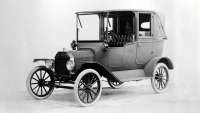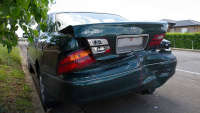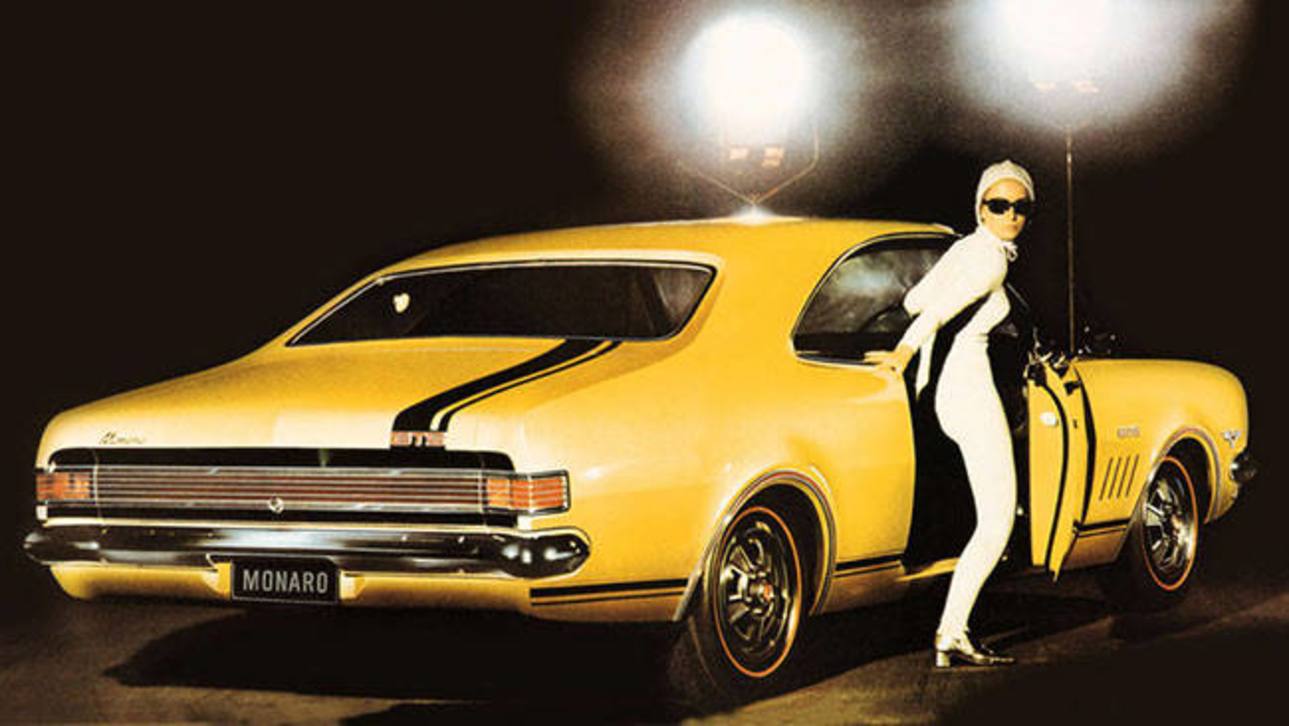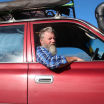The term 'performance car' suggests a pretty broad church these days. On one hand, you have within that description, classic sports cars which exist for their athleticism and race-track smarts, as well as Grand Tourers which tend to feature plenty of pace as well as long legs for covering big distances.
There’s also the hot-hatch which fundamentally equates to a big engine in a small car, and then there’s the supercar and even hypercar, which is reserved for the absolute top-shelf performance products of top-shelf brands.
And somewhere in that mix is the car known as the muscle car. But what is a muscle car?
Well, it’s all but impossible to be precise, but broadly speaking, a muscle car is a mainstream passenger vehicle with an unfeasibly powerful engine fitted at the factory, not to mention a (usually) pretty loud presentation.
If a car ever walked out of a gym locker-room, having just towel-whipped the nerdy guys, it’d be the muscle car. It doesn’t have to be an old car, but since the early days of touring-car racing gave birth to the concept, many muscle cars are, indeed, cars of a certain age.
While the USA is the birthplace of the muscle car, in Australia muscle cars also rang the right bells with local makers producing plenty of models over the decades that fall neatly within the muscle car definition.
Some started out as homologation cars for local touring-car racing, others were a simple response to a marketplace looking for something other than day-to-day transport.
That said, a proper muscle car is one that can perform normal duties, but by the time you’ve added the big engine and the graphics and attitude, it also offers a lot more.
The first Australian muscle cars started appearing when the annual Bathurst touring car race was still all about production cars. In order to qualify to compete in the Great Race, manufacturers had to build a minimum number of the specific model they intended to race.
.jpg)
Called the homologation process, this is when local cars began to sprout big V8 engines, wider wheels, stronger brakes, better transmissions and even details like huge fuel tanks and bucket front seats. Not to mention the stickers and trim pieces designed to let people know what you had.
The Big Three local makers (Ford, Holden and Chrysler) all had a pretty good handle on the muscle car concept. Ford’s GT Falcons were a great example, Holden’s Monaro and Torana were others.
And while Chrysler’s original muscle car, the Pacer, was a bit of an also-ran (albeit one with a huge following now) by the time the brand had cobbled up the Charger, the muscle car scene was getting pretty crowded.
These days, Australian muscle cars of all shapes and sizes are worth big money and specialist brokers and retailers now concentrate purely on muscle car sales.

And the cult of muscle cars Australia-wide is a genuine thing. The cars are seen as serious collector cars and the prices have not only skyrocketed, they’ve dragged up more prosaic models with them.
As an example, a Ford Falcon Phase 3 GT-HO which cost about $5000 back in the day, could cost you a million dollars today. If you can find one (homologation rules at the time meant Ford only built 300 of them).
It’s a similar story with an early (1968 to 1971) Holden Monaro GTS, and even the later-model Torana SL/R 5000 and A9X are bringing huge prices in the hundreds of thousands.
And the Valiant Charger? Cheaper but still a massively expensive toy if you can find an E38 or E49 Bathurst version with the fabled triple Weber carburettors.
.jpg)
It might seem strange in a country that has slavishly followed US motoring trends over the years, but it’s now a fact that a US muscle car is probably a cheaper alternative than a local one.
Back when the Aussie dollar was worth more than a US dollar, importers were flooding the market here with US muscle cars being brought in by the container-load.
As a result, there are now Ford Torinos and Mustangs, Chevrolet Corvettes and Camaros, Pontiac Firebirds and Plymouth Dusters and Dodge Darts at prices that are a fraction of an Australian muscle car of the same era and in the same condition.
Even more surprising are the similarities many of the local heroes share with the US-market hell-raisers.
But since this is about Australian muscle cars, what are the holy grail models?
Holden Torana SL/R 5000

Any Torana designed to win Bathurst is a great example of a local muscle car. The last Toranas were medium-sized cars with over-sized V8 engines and, as such, fit the formula perfectly.
An earlier LC or LJ GTR XU-1 model with its six-cylinder engine (and Peter Brock connection) is another great alternative, while the LX Hatchback with the A9X performance option represents the ultimate Torana.
Years: 1969 to 1977
Pros: Rugged engineering, great mythology
Cons: Pretty hard-riding, expensive given the actual contents
Price: $100,000 to $700,000
Ford Falcon GT
.jpg)
GT Falcons fall into two categories; the early, square-shaped ones and the later, swoopier mid-'70s ones. But either is a great catch in GT form, although it’s the early ones with their Bathurst history that bring the huge dollars.
Either way, you’re buying a big, burly V8 engine and lots of what passed for local style. And you can park it at any car show in the country and be proud.
A Phase 3 GT-HO remains Peak Muscle in this country and about as collectible as a local car will ever get. As the poster-child for the indigenous Australian muscle car, the Phase 3 can’t be beat.
Years: 1967 to 1975
Pros: Terrific V8 engines, Bathurst heritage in spades
Cons: Collectors have forced prices into stratosphere, many are now museum pieces
Price: $150,000 to $1,000,000
Valiant Charger
.jpg)
The short wheelbase version of Chrysler’s Australian family car turned into a legend thanks to pop culture and sheer good looks. Although it never won Bathurst, the Charger is revered here and especially in New Zealand.
Strangely, the V8 version was not the hero model; that was reserved for the inline-six powered variants, especially those with the triple Weber carburettors and wild colours and stripes. The E38 and E49 are the real collectibles, but any Charger is now rare and tough enough to make the muscle-car cut.
Years: 1971 to 1977
Pros: Super strong mechanically, brilliant looks
Cons: Body rust can be a problem, trim now getting hard to find
Price: $30,000 to $500,000
Holden Monaro

There are three distinct families of Monaro, the very first ones, the mid-70s models and the 21st Century version.
The early cars are now rare and expensive but terrific to look at. V8 versions in GTS trim are the prize. The mid-'70s cars were less hard-edged, but still good lookers and were even available as a four-door for fast families (although a GTS badge replaced the Monaro tag).
The third generation was Commodore based and is a modern, very liveable car with sweeping looks and the Monaro badge for kudos.
Years: 1968 to 2005
Pros: Early cars are tough as nails, late cars very liveable
Cons: Mid-70s Monaros lost a bit of venom, rare parts difficult to find
Price: $35,000 to $750,000
Ford Escort RS2000
.jpg)
This one may seem like an odd choice as it was a cheap, small, four-cylinder car. But the reality is that before the hot-hatch, cars like the RS2000 were the way to go fast in a compact package. Made here at Ford’s Sydney plant, the RS2000 was an instant hit.
These are easy to work on and own and there was even an Australia-only four-door model. They have a huge following now and are a global phenomenon, not just a local one. Huge fun to drive.
Years: 1979 to 1980
Pros: Cheaper to buy, cheaper to run, great street cred
Cons: Hard to find for sale now, crude rear suspension
Price: $25,000 to $60,000



.jpg)
.jpg)
.jpg)


.jpg)

.jpg)
 copy.jpg)



.jpg)
.jpg)
.jpg)
.jpg)











.jpg)
.jpg)
Comments